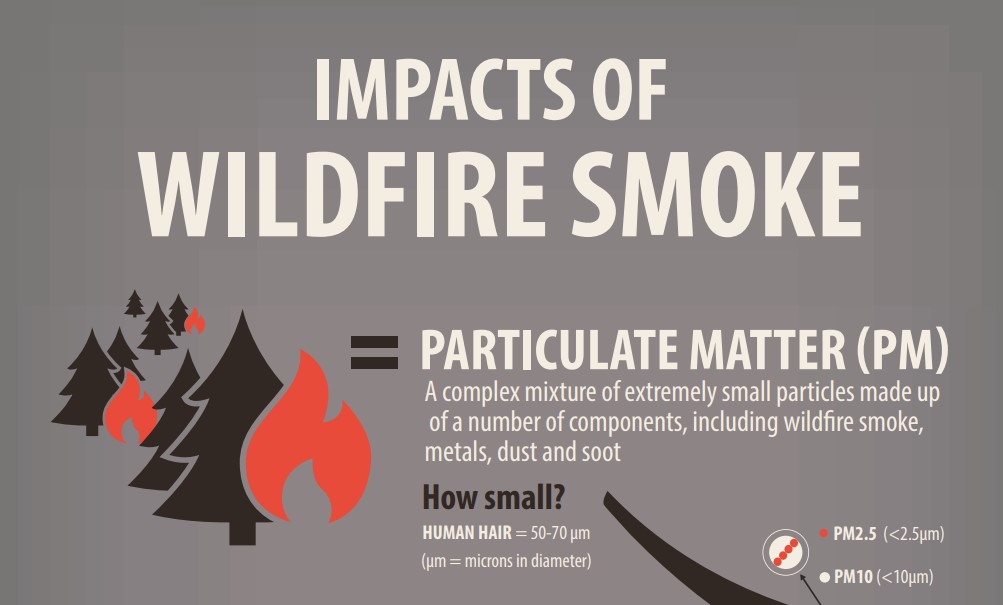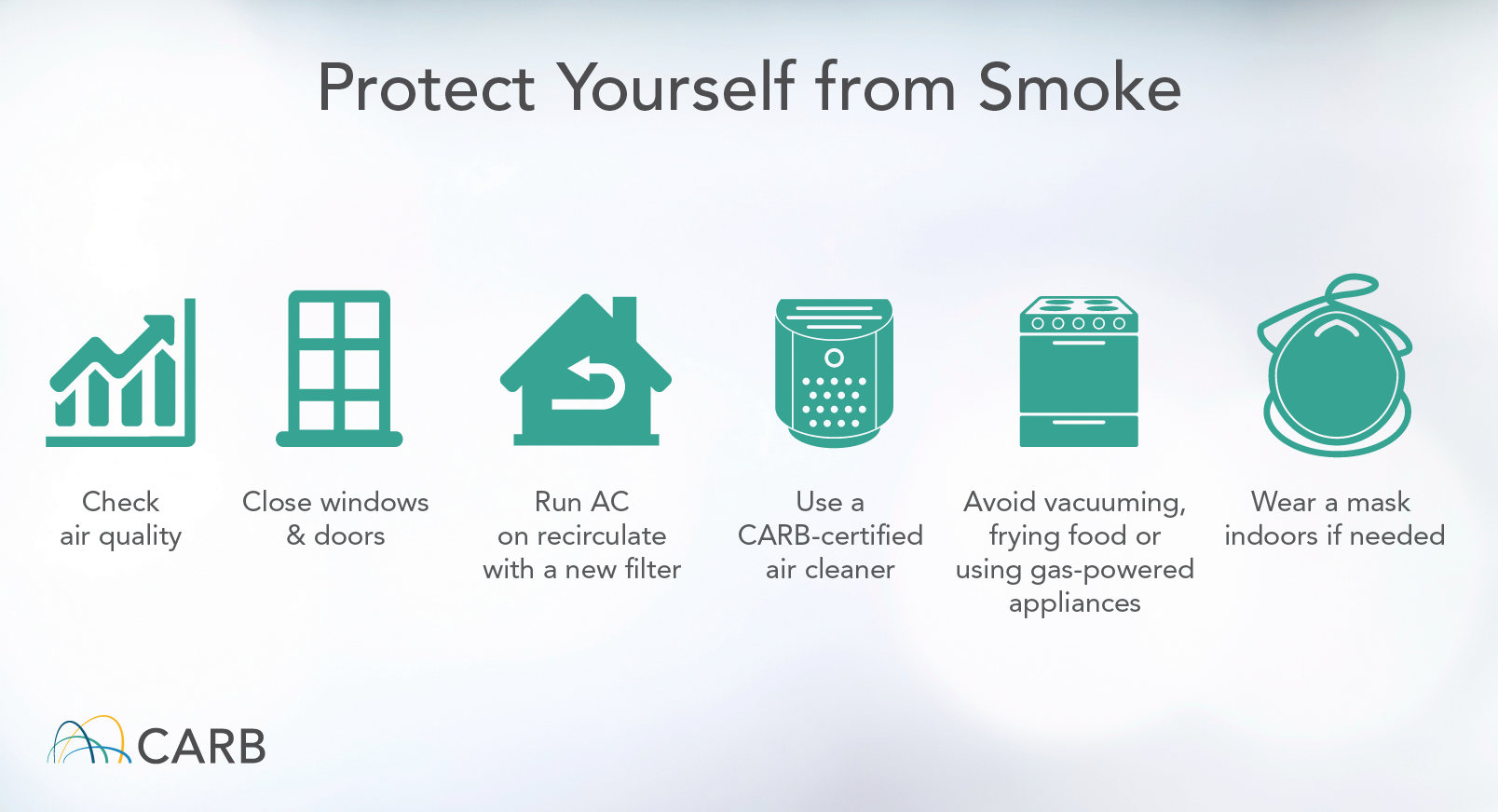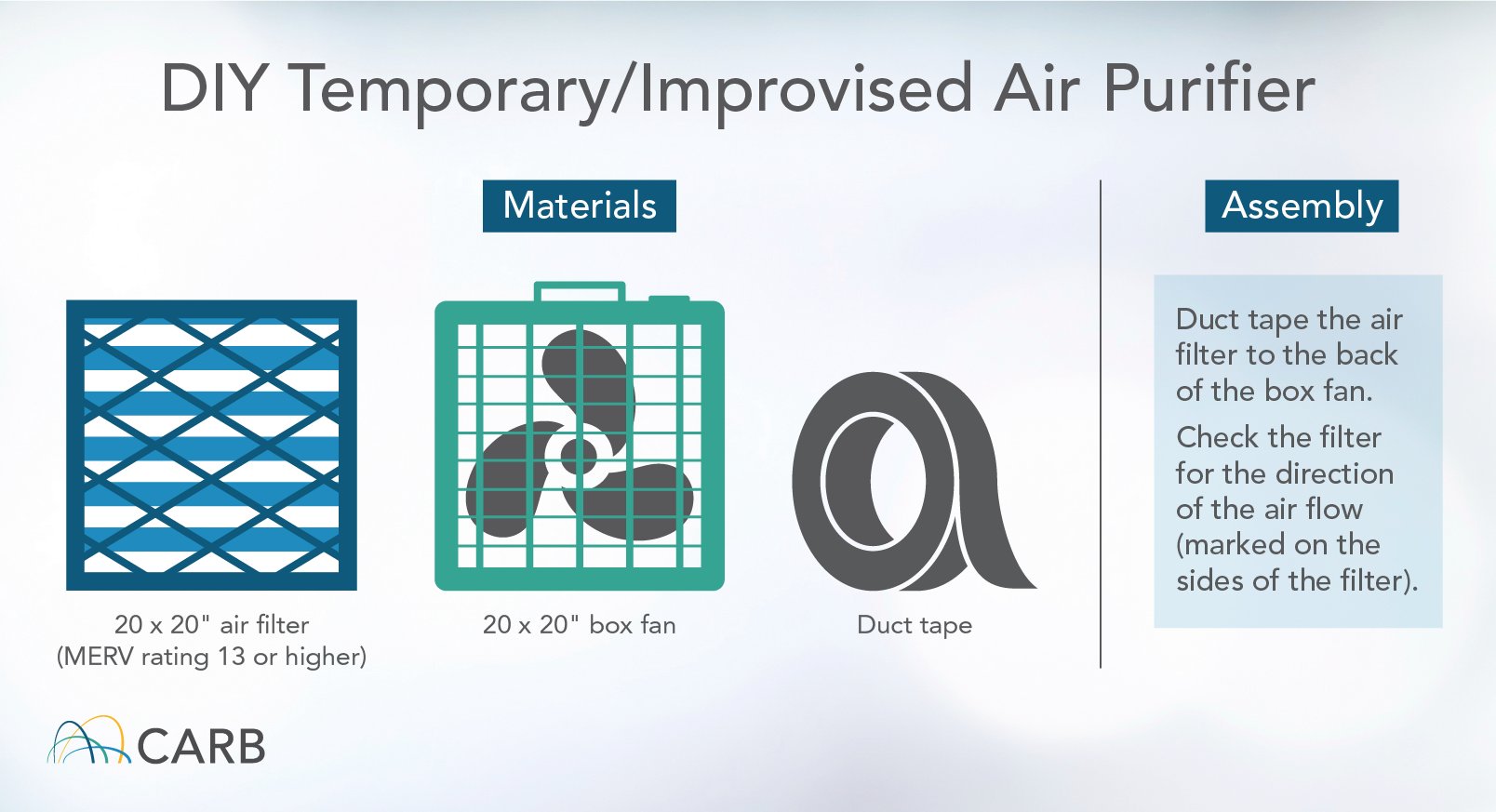Wildfire Information
Wildfires that may be impacting air quality in the San Joaquin Valley:
Wildfires no longer impacting air quality in the San Joaquin Valley:
If you can smell smoke and see ash, that is an indication that you are being affect by poor air quality.
Follow the EPA’s recommendations on “What Can I Do Now to Protect My Family from Wildfire Smoke?”
If you are confused about wearing a mask during wildfire episodes, refer to the EPA guidance.
This page displays real time data from temporary, portable monitors located in the foothills of the Sierra Nevada. The data is not collected or verified by the Valley Air District. Please refer to the District’s ROAR guidelines to make decisions about outdoor activities.
EPA Videos
- Be Smoke Ready: Know Where to Get Air Quality Info
Esté listo para el humo: Sepa a dónde acudir para obtener información sobre la calidad del aire - Be Smoke Ready: Know the Colors of the AQI
Esté listo para el humo: Conozca los colores del Índice de la Calidad del Aire - Protecting Children from Wildfire Smoke in the Pacific Southwest
Protección de los niños contra el humo de incendios forestales en la Región del Pacífico y Suroeste
Cal/OSHA has an emergency regulation in place to protect workers from wildfire smoke
Learn more about this regulationOutdoor workers who have questions regarding smoke impacts due to wildfires should first contact their employer. Employers and/or employees who have additional questions or need assistance with programs to protect workers exposed to smoke from wildfires can call Cal/OSHA's Consultation Services Branch at 800-963-9424. Complaints about workplace safety and health hazards can be filed confidentially with a Cal/OSHA district office.
Worker Safety and Health in Wildfire Regions
Per the CalOSHA regulation, you may check AQI forecasts and current AQI for PM2.5 from the following sources:
- U.S. EPA AirNow (current AQI and daily forecast)
- U.S. Forest Service Wildland Air Quality Response Program
- California Air Resources Board
- Valley Air District Air Quality Forecast
Effort to Reduce Fuels in Forest
With the fuel load in the Valley’s mountain areas at an all-time high due to the drought and the bark beetle infestation, the District is working collaboratively with land management agencies to conduct strategic controlled burns to lessen the wildfire risk. In this effort, the District is being more flexible in allowing more days for prescribed burning activities under marginal conditions, and allowing larger amounts of acres to be treated per day where localized impacts to nearby communities are not expected to occur. In addition, the District continues to advocate for additional funding for state and federal agencies to conduct additional prescribed burning and fuel reduction activities, in an effort to reduce the severity of future wildfires across the region. Learn more here.
Resources:
- Health Risks of Wood Smoke and COVID-19
- Current Satellite Imagery
- Cal fire Incidents map
- USFS Smoke and Fire Map
- Wildfire Smoke - A Guide for Public Health Officials
- Wildfires and Indoor Air Quality (IAQ)
- California Dept Public Health: Emergency Preparedness Office (EPO)
- CDC: Protect Yourself from Wildfire Smoke (includes Covid-19 Recommendations)
- Do you know what to do if smoke from a wildfire is affecting your area?
- California Smoke Information Blog
- AB 617 Community Air Monitoring



